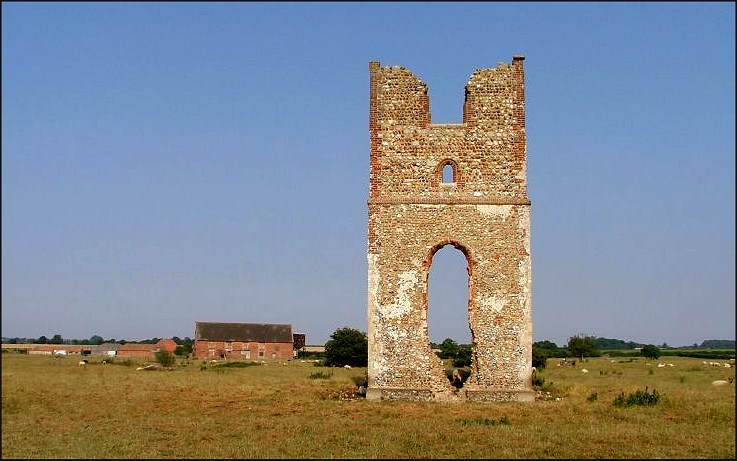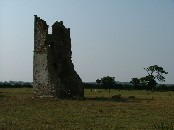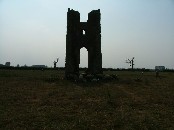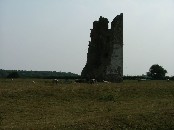| |
|
All
Saints, Godwick
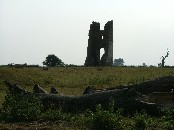 |
|
North-west
Norfolk has the highest concentration of ruined
churches in England, but the story of All Saints
is a well-documented one, and rather different to
that of some of its neighbours. Somewhat rarer
than ruined churches are lost villages, and
Godwick is one of them. It has been
patiently excavated by Norfolk County Council
archeology team, and you can now walk around and
explore the ridges that denote where the houses
were, and the sunken lanes which lead through the
village to the church. The village streets seem
to have clustered to the east of the church, and
the whole site is at once fascinating and
attractive - it is just to the north of the
village of Tittleshall.
|
Godwick had a church at Domesday,
but probably never recovered from the agricultural
depressions of the early 14th century, and it was bought
by the Coke family in 1580 as a part of the massive
expansion of their empire. They used it for grazing
sheep, the use to which it is still put today.
The village appears on an estate
map in 1596 with just four houses, and, interestingly, an
abandoned church, because after the Reformation there had
been no need for it. By the end of the 16th century, the
tower had collapsed. However, in the following century,
the fashion for follies led to a feature being made of
the ruins. Sir Edward Coke had built the massive pile of
Godwick Hall in 1585, a grand Elizabethan manor which
would survive, incredibly, until demolition in 1962.
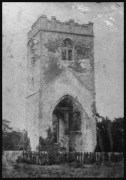 |
|
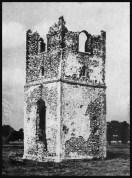 |
|
The ruined church, on its
prominent site a few hundred metres to the west
of the Hall, was completely demolished and the
tower alone was rebuilt in red brick , which must
have looked very fine from his bedroom window.
The estate was part of Tittleshall parish, where
many Coke memorials remain, and so All Saints was
not needed as a working church, merely as an
adornment to the landscape. The tower seems to have been pretty
well intact in the 1920s, retaining its
battlemented stage, but this had gone by the time
it was photographed in the late 1970s, and the
east face of the tower finally collapsed in a
storm in the winter of 1981. You can see copies
of these photographs on the left.
|
| Today, this is a beautiful
place to wander, and we came here on one of the
hottest days of July 2006. The sheep were in no
mood to make a great fuss about our presence,
watching us with mild interest as we explored.
The site is signposted with information boards,
but these are not intrusive. It is haunting to wander along the
village street, and the tower itself recalls to
mind Norfolk village churches which survive, and
still serve communities which were little
different from Godwick half a millennium ago.
|
|
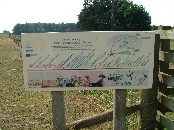 |
Simon Knott, August 2006
(the two archive photographs above
are copied from information boards on the site and do not
retain my copyright)
|
|
|

